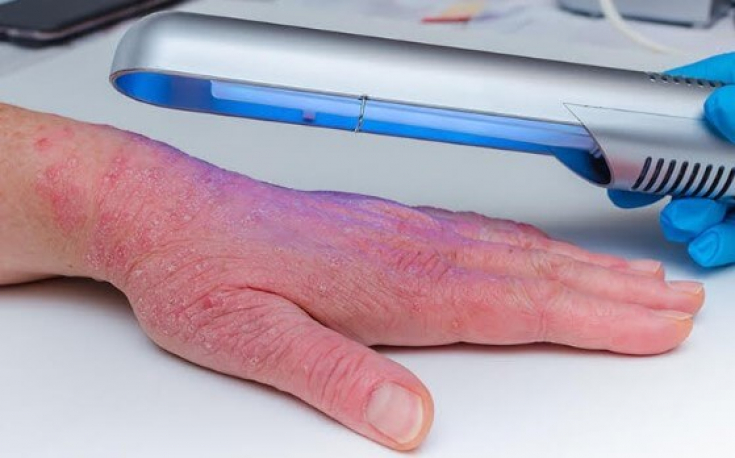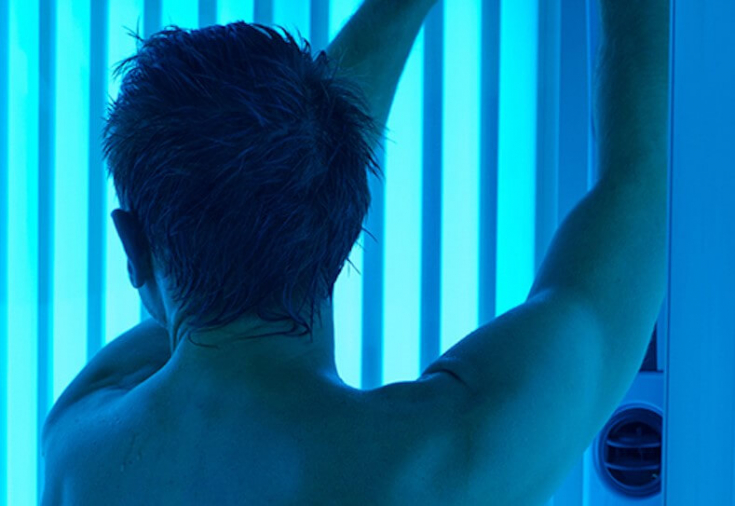Treatment of psoriasis is a rather difficult task, especially in the active phase of the disease, because most of the methods of therapy disappear, and the doctor has no choice but to use the most gentle and mild treatment methods that allow the symptoms to subside diseases.
These methods include phototherapy.
On estet-portal.com read more about different types of phototherapy for psoriasis, methods to improve them effectiveness, as well as who is indicated for this or that method of phototherapy.
- Narrow band ultraviolet phototherapy for psoriasis
- How to improve the effectiveness and safety of NB-UVB phototherapy
- UVB Targeted Phototherapy Psoriasisa
Narrow band ultraviolet phototherapy for psoriasis
Phototherapy using narrow-band ultraviolet B (NB-UVB) is recommended as monotherapy for adults with plaque psoriasis.
For adults with generalized plaque psoriasis, the recommended starting dose of NB-UVB phototherapy should be based on the minimum erythema dose or should be determined based on a fixed dose protocol or skin phototype.

For adults with generalized plaque psoriasis, thrice-weekly dosed NB-UVB phototherapy or short-term psoralen plus ultraviolet A (PUVA) monotherapy is recommended.
PUVA therapy is recommended for patients with palmoplantar psoriasis or palmoplantar pustular psoriasis and for the treatment of moderate to severe psoriasis.
PUVA therapy: modern technologies against psoriasis and vitiligo
Because of its increased safety, convenience, and low cost, NB-UVB is preferred over PUVA monotherapy for adult psoriasis, although it is less effective.
is recommended for patients with drip psoriasis, regardless of their age. For eligible patients with generalized plaque psoriasis
NB-UVB home phototherapyis recommended as an alternative to in-hospital NB-UVB phototherapy. Treatment with
NB-UVB phototherapyis recommended for pregnant women with drip or generalized plaque psoriasism.

News about psoriasis disease: the possibilities of the immune system and the impact on it How to make NB-UVB phototherapy more effective and safer
As a measure to possibly improve efficacy, NB-UVB phototherapy can be safely supplemented with concomitant topical therapy using
retinoids, vitamin D analogs, and corticosteroids.Oral retinoids
may be combined with NB-UVB phototherapy in eligible patients with generalized plaque psoriasis if they have not responded adequately to monotherapy. Due to an increased risk of skin cancer, long-term combination therapy with NB-UVB and cyclosporine is not recommended for adults with generalized plaque psoriasis.
Toreduce the risk of cancer
of the genital organs, all patients receiving NB-UVB phototherapy should have genital shielding. It is also important to protect the patient's eyes by providing safety goggles.
Because of the risk of photocarcinogenesis, use caution when administering NB-UVB phototherapy to patients with a history of
melanomaor multiple non-melanoma skin cancer. Folic acid
supplementsare recommended for women of childbearing age who are undergoing NB-UV phototherapyB.
Read the most interesting articles inTelegram! UVB targeted phototherapy for psoriasis
UVB targeted phototherapy is recommended for adults with
localized plaque psoriasis(<10% body surface area), for selected plaque psoriasis lesions. For maximum effectiveness, the recommended treatment frequency for targeted UVB phototherapy in adults with localized plaque psoriasis is 2-3 times per week.
In adults with localized plaque psoriasis, the starting dose of targeted UV phototherapy is based on the minimum erythema dose or fixed dose protocol or skin phototype.
For the treatment of localized plaque psoriasis in adults, the most effective targeted UV phototherapy is
308nm excimer laser. Read also:






